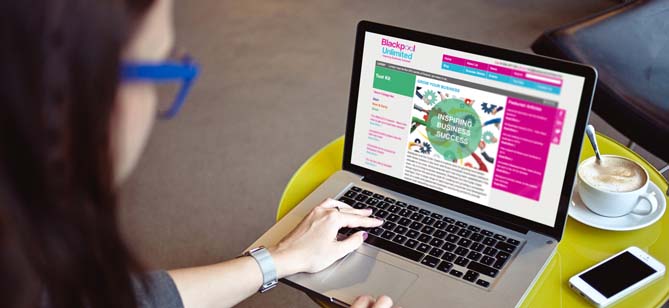The US and the UK Master’s Part / Chapter-wise Dissertation Writing Service

Then You’ve Certainly Reached the Right place
Efficacy And Safety Of Salicylic Acid And Glycolic Acid As An Adjunct To Topical Depigmenting Agents In The Treatment Of Melasma
Published 23, March 2015Ethawi and Sidiq63 in their study, propounded to check the efficacy of superficial chemical peel of Salicylic Acid in combination with topical depigmentation agent and depigmentation agent alone in melasma treatment. About 88 female (Group 1= 45, Group 2= 41) patients were recruited based on those attended outpatient clinic from February 2008 to August 2008 conducted by Department of Dermatology and Venereology in Sulaymaniyah (Iraq) city. Most of the patients have skin type III and IV. All such patients were treated with 20% and 30% Salicylic Acid with depigmentation agents and depigmentation alone for every 2 weeks. Results indicate that patients those receive combination agents showed better improvement as compared with depigmentation alone.
The combined effect of hydroquinone cream and GA peels for melasma treatment was studied by Hurley et al15 by comparing 4% hydroquinone cream with 4% hydroquinone cream and GA peels. An 8-week, comparative, split-faced prospective trial was conducted with 21 Hispanic melasma patients. The intervention group received 20–30% GA peels for 2 weeks on one side of the face along with daily application of 4% hydroquinone cream (twice), and sunscreen lotion (SPF 25 UV-B) in the morning. Improvements were assessed by mexameter, Melasma Area and Severity Index, linear analog scale and patient physician evaluation. Both groups revealed no significant differences. The results indicated that the efficacy of 4% hydroquinone but GA peels were not found to be efficient.
Sarkar et al18 performed a 21-week comparative study to determine whether the combination of GA peels (3 peels of 40% GA and 3 peels of 30% GA) with modified Kligman’s HQ formula (MKF) provides an effective treatment for melasma. 40 Indian patients were included in the study. MASI scores were used to assess melasma severity and clinical response. When compared to MKF, combined GA peels and MKF offered a better outcome in the melasma treatment (P<.01). Both groups showed minimal adverse effects (AEs). Another approach in the treatment of melasma was studied by39 comparing the efficacy and safety of a cream containing 10% buffered GA, sunscreen, 4% hydroquinone and vitamins C and E (Glyquin, ICN Pharmaceuticals, Costa Mesa, USA) with sunscreen cream alone for depigmentation treatment of epidermal melasma. A 12-week randomized controlled trial was conducted with a sample of 39 Hispanic females (Fitzpatrick skin types III–V). The study cream was applied into the face twice daily. Decreased mexameter readings were observed more for combination cream than sunscreen alone (P<.0001).
Usuki et al27 studied the effect of Alpha-hydroxy acids (AHAs) on melanin synthesis by analyzing performed growth curve determinations, melanin assays, Western and Northern blotting for melanogenic proteins tyrosinase-related protein (TRP) TRP-1, TRP-2 and tyrosinase in human melanoma cells and mouse B16 cells. Melanin formation was inhibited by GA or Lactic Acid LA based on the administered dose. Results reveal that melanin formation was suppressed by GA or LA by inhibiting the activity of tyrosinase. LA and GA reduce pigmentary lesions by stimulating the epidermis turnover as well as by inhibiting melanin formation. The efficacy and side effects of 35% Glycolic Acid (GA) and 15% trichloroacetic acids (TCA) in combination with 20% azelaic acid cream were analysed by Valkova32 using a randomized comparative trial. Two groups were included in this study. Group I includes 35% GA (n=12). Group II includes 15% TCA (n=14). The sample population comprises phototype II (n=6), phototype III (n=11) and phototype IV (n=9). Melasma Area and Severity Index (MASI) values were reduced for both groups (t=0, 12; p>0, 05).
No adverse side effects were reported. Long-term follow-up indicated that therapeutic results continued only in those patients who continued azelaic acid and sunscreens. Similarly, Khunger et al26 performed a 12-week open left-right comparison study to compare the safety and efficacy of 1% tretinoin peel with 70% GA in dark-skinned Asian population (n=10 female patients) to treat melasma. One-side of the face was applied with 70% GA and another side with 1% tretinoin peels. Improvements were confirmed by means of modified MASI and using photographs are taken during baseline and during 6th and 12th weeks. No statistically significant differences were observed on both sides of the face. Only minimal adverse effects were observed. 1% tretinoin peel was tolerated by patients and was effective in dark-skinned patients. Followed by Valkova32 and Erbil et al45 utilized azelaic acid cream to treat recalcitrant melasma. Azelaic acid cream was combined with GA peels and adapalene gel. 28 recalcitrant melasma patients were included in the 20-week prospective, randomized, controlled trial. The intervention group received serial GA peels and 20% topical azelaic acid cream (twice daily) and 0.1% adapalene gel (four times, during night). On the other hand, topical azelaic acid and adapalene was provided for control group. MASI scores were decreased in both groups however, chemical peel groups showed better results. Mild degree of hyper pigmentation was observed in GA peel group which cleared at the end of the treatment.

Researchers to mentor-We write your Assignments & Dissertation
With our team of researchers & Statisticians - Tutors India guarantees your grade & acceptance!
Read MoreRendon et al3 investigated the combined effect of efficacy and side effects of GA peels with Triple combination (TC) cream (0.05% tretinoin, 0.01% fluocinoloneacetonide and 4% hydroquinone) for melasma treatment using a prospective study. Prior to study, TC cream was applied for 2 weeks. This was followed by alternating cycles of 5 GA peels and 6 biweekly cycles of TC cream. Within 6 weeks, 5% of participants showed better outcome and after 12 weeks, 65% of subjects achieved treatment success (P<0.001 vs. baseline). In an attempt to improve the efficacy of GA peels, Garg et al19 conducted a study to identify the better priming agent. A prospective study was conducted to compare the effects of tretinoin and hydroquinone as priming agents. This study included three groups, each containing 20participants. GA peels were administered to Group I and prior to peeling 0.025% tretinoin was given to Group II and 2% hydroquinone was administered to Group III. For initial 3 months, GA peels were given to patients biweekly and then once in a month for another period of 3 months. Significant improvements were observed in Groups I, III (p<0.001) during 6 and 9 months and Groups II, III (p<.001) at the 9th month. Hydroquinone was found to be better priming agent than tretinoin and helps to improve the results of GA peels. The efficacy and side effects of a new cream containing Glycolic Acid, hyaluronic acid and hydroquinone (HQ) was analysed prospectively by Guevara et al39 in epidermal melasma treatment. The open, uncontrolled trial comprised of 15 Latin American female participants. The study cream was applied throughout the face twice daily for 12 weeks. Out of 15 patients, 14 patients showed improvement (93%). Only mild adverse events were reported. If irritation exists, moisturizer was provided. In the recent study by Ilknur et al47 the efficacy of GA peels was compared with amino fruit acid (AFA) peels using a randomized comparative study. 12 serial peels were provided to patients on each side of the face for every 2 weeks for a period of 6 months. Decreased modified MASI scores were obtained at 3 and 6 months (p<.05). Both groups showed no significant statistical differences. Compared to GA peels, AFA peels are found to be more tolerable.
In the same year, Kumari and Thappa (2010) evaluated the efficacy of GA peels (20-35%) and trichloroacetic acid (10–20%) in Indian women. 40 women (non-pregnant) with MASI score of 10 were included in the study. Pre-peel program comprised 0.1% tretinoin or 12% GA cream applied during night for 2 weeks. GA group received 20–35% GA facial peel for every 15 days and TCA group received 10-20% TCA. MASI scores indicated 79% reduction in GA group and 73% reduction in TCA group; however the difference was insignificant. Better response was revealed by epidermal-type melasma patients than with mixed-type melasma patients (P<0.05). When compared to TCA, GA peel was found to have fewer side effects. In an another study by Faghihi et al49 the complications and efficiency of GA 70% were compared with 1% Tretinoin peeling. Around 63 bilateral melasma female patients were enrolled into the double-blinded, randomized comparative clinical trial. GA peeling (70%) was applied on one side of the face and Tretinoin (1%) peeling was applied on another side with 2-week interval for 4 times. Decreased Melasma Area and Severity Index (MASI) scores were obtained for both the sides. Patients' discomfort and adverse effects were recorded and compared. Both peeling provided the similar results however, the patients were found to be more comfortable with Tretinoin 1% peelings than with GA 70% peeling. In the same way, the safety and efficacy of the combined effect of 1064-nm Q-switched neodymium-doped yttrium-aluminium-garnet laser (1064 QNYL) and 30% Glycolic Acid (GA) peel was compared by Perez et al28 using a split-face study design trial. Six sessions of 1064 QNYL treatment were provided to entire face of 16 patients at 1-week interval. This was followed by 3-sessions of GA to one side of the face at 2-week interval. The Mexameter readings, mMASI score were 32.6% and 37.4% for combined therapy side and 22% and 16.7%, for laser side (P ≤ 0.05). Combined effect of 1064 QNYL and GA was found to be superior to laser alone for melasma treatment.
Similar to Kalla et al43 and Puri46 conducted a comparative study to evaluate 15% TCA peel and 35% GA peel. 30 melasma patients (age 20–50 years) were treated by 35% GA and 15% TCA. 70% participants in the GA group and 64% in the TCA group revealed good response during subjective evaluation by patients. There were no statistically significant differences between the two groups. A comparative study was conducted by Kar et al52 to identify the efficacy of Glycolic Acid peel, low fluence QSNYL, and high fluence QSNYL in patients with melasma. The sample of 75 patients were employed and separated into three groups with 25 patients in each group (Group A= 25 patients with low fluence QSNL at weekly interval; Group B= 25 patients with high fluence QSNL at 2 week interval; Group C=25 patients with Glycolic Acid at 2 weeks interval) and the patients were followed up for 12 weeks. Out of 75, only 58 completed the study. Results showed that significant improvement in Group A as compared with Group B (P<0.05) and C (P<0.05). Hantash and Jimenez53 prospectively examined the effectiveness of Lumixyl Topical Brightening system (include a mixture of 0.01% oligopeptide an antioxidant cleanser cream, 20% of Glycolic Acid lotion and physical sunscreen) in the treatment of mild-to-moderate melasma among 4 patients. After 6 weeks of treatments all patients showed dramatic improvement.
In the same year, Sobhi and Sobhi23 compared the safety and effectiveness of nanosome vitamin C iontophoresis and Glycolic Acid peel 70% in the melasma treatment among 14 Egyptian women. Skin type IV-V was used for right-left comparison for 6 sessions of treatment, the right side was treated with Glycolic Acid 70% peel and left side was treated with nanosome vitamin C iontophoresis. After six session of treatment, the outcome was evaluated by means of severity score index with photographs. Both sides were showed good improvements; however the area treated with nanosome vitamin C iontophoresis revealed better improvement as compared with Glycolic Acid treatment. Subsequently, the safety, efficacy and acceptability of novel hydroquinone-free emulgel were accessed by Park et al49 The emulgel provided with the combination of glycolic, lactic and Kojic, arbutin and UVA/UVB filters among 35 women with melasma (age range: 25 to 40, with phototype I-IV). The product was applied to face of these women daily at morning for 30 days. At the end of the study, both instrumental (Visioface) and dermatological (MASI score) evaluation was performed. Outcome of the study revealed a reduction in MASI (42%) as well as in Visioface (11% of brown spots and 32% of UV spots). No side effects were noted. The efficacy and acceptability of brightening system explained by Hantash and Jimenez53was further performed by Ramirez et al55.They conducted open-label prospective and multicentre study among 33 Hispanic female over 16 weeks. Clinical assessment of Severity Index score, MASI score, acceptability, safety and standard clinical photography were performed. The results shows that higher acceptability with mean reduction of 36%, 46%, 54% and 60% of MASI was observed at 4, 8, 12 and 16 weeks.

Full Fledged Academic Writing & Editing services
Original and high-standard Content
Plagiarism free document
Fully referenced with high quality peer reviewed journals & textbooks
On-time delivery
Unlimited Revisions
On call /in-person brainstorming session
More From TutorsIndia
Coursework Index Dissertation Index Dissertation Proposal Research Methodologies Literature Review Manuscript DevelopmentREQUEST REMOVAL



